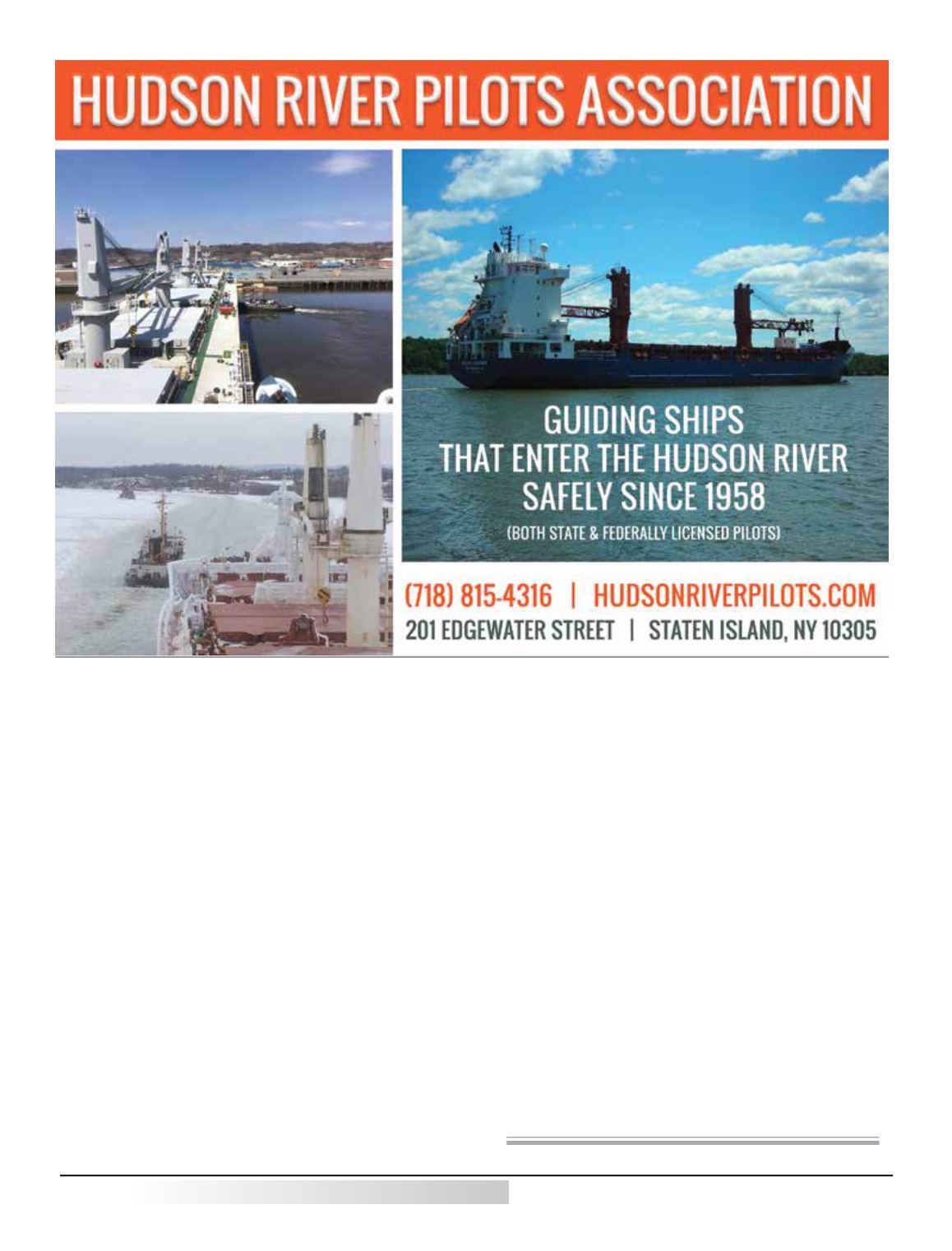

April 2017
57
boatingonthehudson.com
c
o
l
o
r
occupied unnecessarily. They must be available when needed!
The pilots even recommended to the coast Guard that there be
a 48 hour time limit on these newly proposed anchorages. The
pilots also suggested that the additional anchorages at Yonkers
only be opened when the Coast Guard declares heavy weather
conditions in New York Harbor, thereby giving vessels a safe
place to ride out storms.
The pilots also stressed that all vessels at anchor are manned
and that this is an expensive proposition, these vessels have
cargo that must be transported to it’s destination. Vessels only
anchor if necessary.
Another point worth mentioning is that vessels need these
anchorages so that they have a place to anchor that is free
from underwater obstructions. An increasing number of river
crossings by pipelines and electrical lines are at danger of being
damaged if a vessel drops an anchor (that can weigh over 15,000
lbs) on one. There are more cables coming, most notably the
Champlain Hudson Power Express project. This cable is unique
because rather than just crossing the river for a short distance
plans are for it to run north to south from just below Catskill to
the Harlem River entrance, exiting only to avoid Haverstraw Bay.
It appears from the many meetings and newspaper reports that
people seem to be concerned about the crude oil trade. Crude is
one of many cargoes shipped on the Hudson. The Bakken crude
is controversial but regardless of individual opinions on this
type of oil, having safe bail-out points spread along the river for
vessels reduces the risks to the environment and allows crews to
do their job safely.
The proposed anchorages are located in areas that have
been historically used as bailout points and to await favorable
conditions. One small anchorage in the 109 mile span does not
adequately serve the need of vessels on the river.
The proposed anchorages have been used for decades and
this proposal serves to make them official. This is something
that should have been done long ago, safe waterways need safe
anchorage areas. These anchorages are a tool that allows the
Hudson River Pilots and the tugboat crews to continue to safely
accomplish their mission.
I have heard concerns regarding recreational traffic and the
impact these anchorages will have on the industry. By making
these anchorages official there will be many benefits to the
recreational boating industry such as increasing safety by
giving commercial vessels a safe place to bail out rather than
pushing ahead in foul weather. These anchorages becoming
official also subjects commercial vessels to time time limits
and other regulations enforced by the U.S, Coast Guard. Having
these customary anchorage areas drawn on the nautical chart
also improves boating safety.
The pilots and the tugboat crews do their vital job quietly.
Up until now it seems that only a portion of the Hudson River
interests have been heard in the anchorage hype and hysteria.
I hope that this relieves some of the concerns. We must all be
vigilant but the entire picture should be brought out before
decisions are emplace.

















